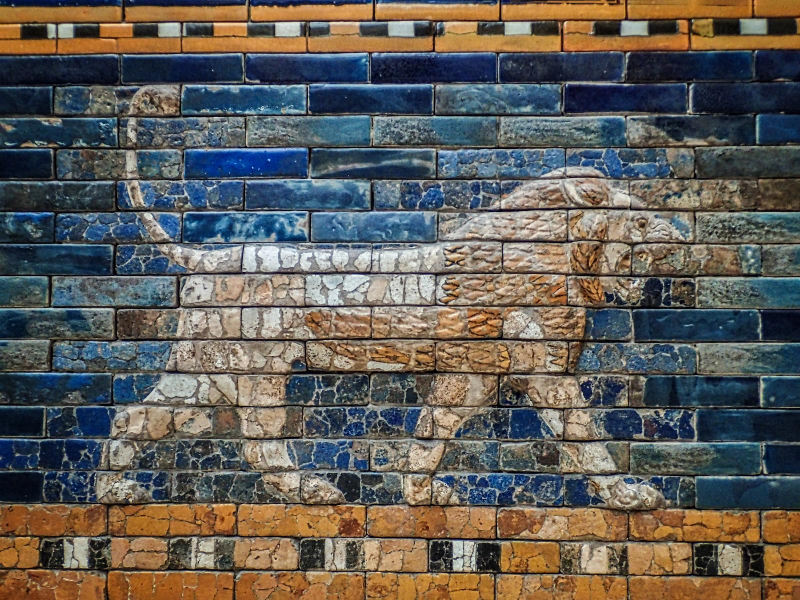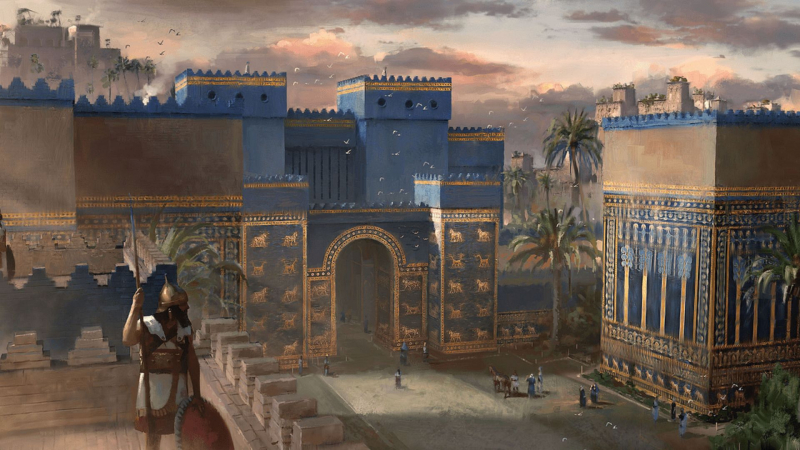The Ishtar Gate
The Ishtar Gate was Babylon's eighth inner-city gate (in the area of present-day Hillah, Babil Governorate, Iraq). On the north side of the city, it was built around 575 BCE at the king's command. It was a section of the city's grand processional road, which was enclosed by a wall. The walls were finished in primarily blue glazed bricks with low reliefs of animals and gods that were also constructed of bricks that have been shaped and colored differently. Many people today believe that the Ishtar Gate is the most outstanding example of Mesopotamian art.
Large in size, the gate is 100 feet wide and 14 feet high. Its golden and yellow mosaics gave away the fact that one was entering a wealthy and strong city, and its crenelated towers demonstrate architectural ability. Restorers surmise that lapis lazuli was used to tint or cover the Ishtar Gate based on dye and paint residue. The pricey lapis paint highlights the significance of the building. Two of the main gods of the Babylonian pantheon are depicted repeatedly in a low relief artwork on the front of the gate. The national deity and chief god Marduk is shown as a dragon with a snake-like head and tail, a lion's scaled torso, and strong talons for back feet. The Ishtar gate's bricks were constructed from finely textured clay that was pressed into wooden molds. Additionally, the bricks used to build each of the animal reliefs were created by squeezing clay into reusable molds. The brilliant blue background glazes, which mimic the hue of the highly valuable lapis lazuli, predominate. The glazes utilized for animal images are gold and brown. Black, white, and gold glaze is used for the rosettes and borders.
The Ishtar Gate was supposedly just the last building on a long route heading into the city's north side. The road leading to the gate is thought to have been lined with small castle towers, all of which were crenelated like the top of the Ishtar Gate. It is unclear if this was done merely for aesthetic purposes, to defend archers, or both.










